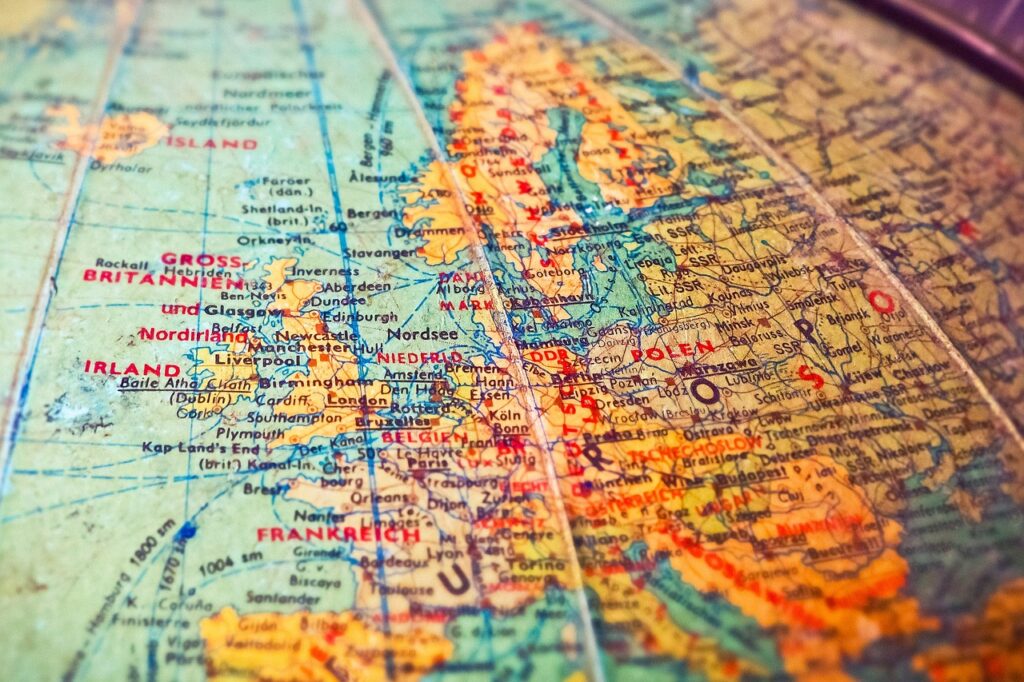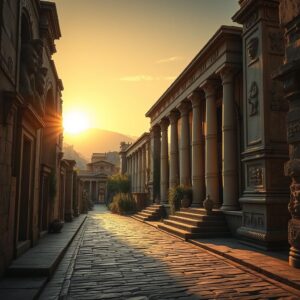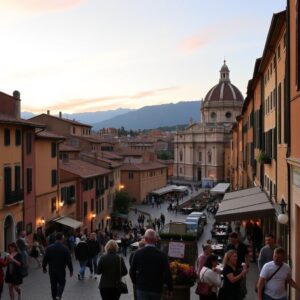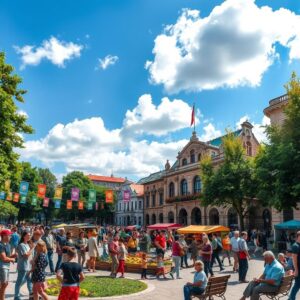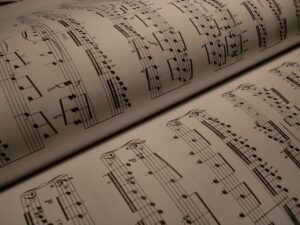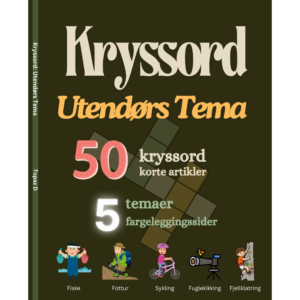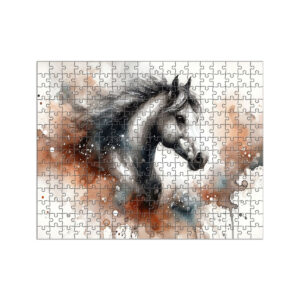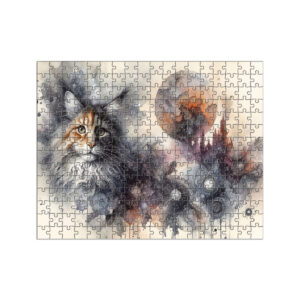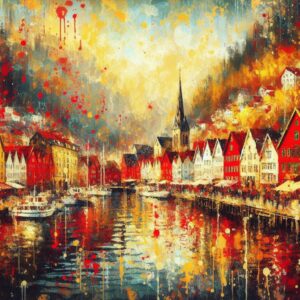Europe is a melting pot of diverse cultures, where traditions, food, and dance reveal the essence of each region. Whether you’re savoring a fresh croissant in a Parisian café or witnessing the passionate movements of Flamenco, European customs are a vibrant display of history and identity. These traditions have been passed down through generations, shaping the continent into the cultural giant it is today. As we explore the rich tapestry of Europe’s heritage, don’t forget to challenge yourself with our European Traditions crossword puzzle, where you’ll discover many of the cultural gems highlighted in this article.
Traditional European Dances: Moving to the Rhythm of Culture
Dance has long been a central element of European life, not only for entertainment but as a means of expressing emotion, identity, and even social commentary. Across Europe, dance is intertwined with tradition and reflects the history of its people.
Flamenco: The Soul of Spain
Flamenco is more than just a dance; it is a deep, soulful expression of Spanish culture, particularly in the Andalusian region. Characterized by its passionate movements, sharp footwork, and emotional intensity, Flamenco is often performed alongside singing and guitar music, creating a full-bodied sensory experience. This dramatic dance is a symbol of pride, often telling stories of love, pain, and perseverance.
Polka: Eastern Europe’s Joyful Beat
Polka, a lively dance originating in Central Europe, has spread throughout the continent and beyond. The cheerful and fast-paced rhythm makes it a popular dance at folk festivals, where dancers whirl around in joyful circles. Though it began in Poland, polka has been embraced by many cultures, adding a sense of unity to European dance traditions.
Yodeling and Fado: Songs in Motion
While Flamenco and Polka represent formal dance, other traditions like yodeling and Fado bring vocal elements into the mix. Yodeling, a vocal technique from the Alpine regions, involves rapid changes in pitch that mimic the natural landscape, echoing across the mountains. Meanwhile, Fado, a mournful yet beautiful Portuguese music genre, is often accompanied by subtle dance movements that evoke longing and nostalgia, paying homage to the country’s seafaring past.
Europe’s Culinary Treasures: A Journey Through Food
European cuisine is incredibly varied, reflecting the geography, climate, and history of its regions. From the Mediterranean shores to the Scandinavian north, food in Europe is a cultural experience that connects people across generations.
France: The Art of Pastry and Baked Goods
In France, food is an art form, and nowhere is this more evident than in its world-famous pastries and baked goods. Croissants, with their delicate, buttery layers, are perhaps the most iconic symbol of French culinary mastery. Similarly, the humble baguette—crisp on the outside, soft on the inside—is not just bread; it’s a staple of daily French life, enjoyed with every meal or simply on its own with a touch of cheese.
Italy: Gelato, Risotto, and Pesto
Italy’s cuisine is beloved worldwide, and its regional dishes are as varied as its landscape. Gelato, a creamy and intensely flavored Italian ice cream, has gained global popularity, while risotto, a rich rice dish, showcases the country’s love for simple yet hearty ingredients. In Liguria, pesto—made from basil, garlic, olive oil, and Parmesan cheese—is a regional specialty that highlights the Mediterranean’s love for fresh, local produce.
Spain: Tapas and Paella
Spanish food is equally diverse, with tapas and paella leading the way in its culinary offerings. Tapas, small plates meant for sharing, encourage socializing over a variety of flavors. Paella, a traditional rice dish from the Valencia region, is often made with seafood, saffron, and vegetables, reflecting the Mediterranean’s abundance.
Greece: Souvlaki and Pita
Greece’s cuisine is deeply rooted in the Mediterranean diet, which emphasizes fresh vegetables, olive oil, and lean meats. Souvlaki, grilled meat skewers often served with pita bread, is a classic street food that embodies Greek hospitality. Pita, a versatile flatbread, is not only served with meats but also accompanies dips like tzatziki, making it a culinary staple in Greek households.
Desserts from Around Europe: Strudel, Baklava, and More
Europe is also home to a variety of decadent desserts. Strudel, a pastry from Austria, is traditionally filled with apples and cinnamon, offering a sweet ending to any meal. Baklava, with its layers of filo dough, honey, and nuts, is a beloved dessert across the Balkans and Turkey. Marzipan, made from almonds and sugar, adds a sweet finish to many German and Central European celebrations.
Traditional European Beverages: From Espresso to Vodka
In Europe, beverages play a central role in daily life and social gatherings, often accompanying the continent’s rich culinary traditions.
Coffee Culture: Espresso and Beyond
For many Europeans, coffee is not just a drink but an experience. Espresso, in particular, is synonymous with the café culture found in Italy and France. A quick shot of rich, dark espresso is the preferred choice in the morning, while afternoon café visits often stretch into hours, with locals sipping slowly and chatting with friends.
Spirits and Drinks: Vodka and Caviar
Vodka, a strong spirit that originates from Eastern Europe, is often enjoyed during celebrations, family gatherings, or festive toasts. Paired with caviar in some regions, vodka symbolizes the deep-rooted traditions of hospitality in countries like Russia and Poland.
Fondue and Regional Drinks
Moving to Switzerland, fondue is a must-try dish, especially during the colder months. This hearty dish of melted cheese is served with bread for dipping and is best enjoyed with local wines. Beer, too, is an essential part of Europe’s drinking culture, most notably celebrated during Germany’s famous Oktoberfest, where millions of liters of beer are consumed every year.
Europe’s Fashion and Attire: Where Tradition Meets Style
European fashion has a long and storied history, with each region offering clothing that reflects its cultural heritage.
Kilts and Lederhosen: A Nod to Regional Pride
In Scotland, the kilt is more than just a garment; it is a symbol of national pride. These woolen pleated skirts, often patterned with family tartans, are worn during traditional ceremonies and celebrations. Similarly, in Germany and Austria, lederhosen—leather shorts with suspenders—are worn during festivals like Oktoberfest, showcasing Bavarian pride.
Pashminas and Berets: Accessories with History
European fashion is not just about clothing; accessories also play an important role. The elegant pashmina, often associated with South Asia, has found a home in European wardrobes, offering both style and warmth. Meanwhile, the beret, a soft round cap from France, has become an enduring symbol of French fashion and individuality.
European Festivals and Celebrations: A Time for Joy
Europeans know how to celebrate, with festivals that blend food, music, dance, and tradition into a joyous experience.
Oktoberfest: Germany’s Iconic Festival
Oktoberfest is the world’s largest beer festival, held annually in Munich, Germany. Originally a royal celebration, the festival has evolved into a massive event where visitors from all over the world gather to enjoy traditional German food, music, and, of course, beer. Dressed in dirndls and lederhosen, attendees drink from steins while enjoying the lively atmosphere.
Sauna Culture in Finland: A Relaxing Tradition
In contrast to Germany’s boisterous Oktoberfest, Finland’s sauna culture offers a more tranquil form of celebration. For Finns, the sauna is a sacred place, where family and friends gather to relax and cleanse both body and mind. This tradition dates back centuries and remains an essential part of Finnish life.
Tarot and Folklore: Mysticism in European Celebrations
Mysticism and folklore also play a role in European festivals. Tarot cards, often associated with fortune-telling, have been used for centuries across Europe during festivals and holidays. These traditions offer a glimpse into the mystical side of European culture, where the line between folklore and reality blurs.
The Role of Music and Instruments in European Culture
Music is an integral part of Europe’s cultural identity, reflecting the spirit of its people and regions.
Accordion: Europe’s Folk Instrument
The accordion is synonymous with European folk music, especially in countries like France, Italy, and Poland. Its lively, melodic sound has made it a favorite for street performances, folk dances, and even modern music festivals, bringing communities together through its joyful tunes.
Eurovision: Europe’s Musical Competition
The Eurovision Song Contest is a massive annual competition that unites countries across Europe through music. Each participating nation submits a song, often representing the country’s musical traditions, and competes for the coveted title of Eurovision champion. The contest has become a cultural phenomenon, with millions tuning in each year to celebrate Europe’s musical diversity.
Art and Architecture in Europe: Baroque to Renaissance
Europe’s architectural and artistic achievements have left an indelible mark on global culture.
Baroque Architecture: Grandeur and Drama
Baroque architecture, known for its opulent details and dramatic flair, can be seen across Europe, especially in Italy, France, and Spain. Churches, palaces, and theaters built in the Baroque style reflect the wealth and power of Europe’s ruling classes during the 17th and 18th centuries.
Renaissance Art: A Cultural Awakening
The Renaissance was a period of cultural rebirth, beginning in Italy and spreading throughout Europe. Artists like Leonardo da Vinci and Michelangelo revolutionized art with their focus on humanism, proportion, and beauty. Their work not only shaped European art but also laid the foundation for modern artistic movements.
